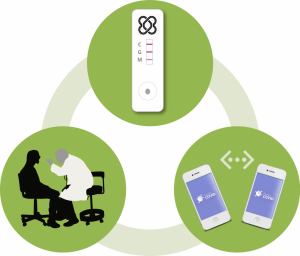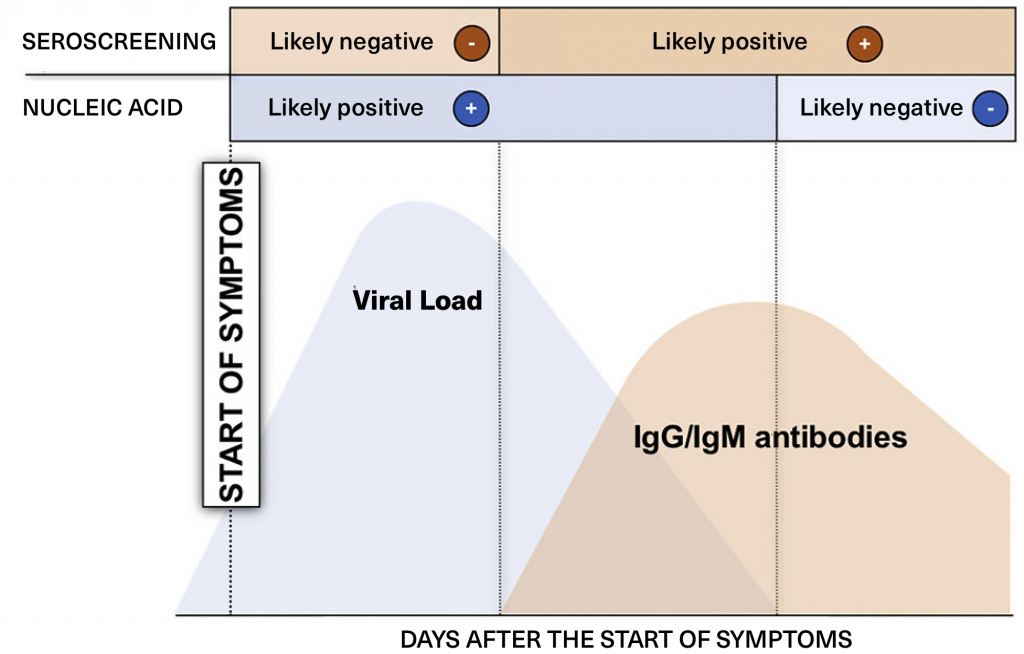Seroscreening
Comparing techniques
Seroscreening vs. RT-PCR
PCR or TMA diagnoses and seroscreening are complementary: Seroscreening can help find possible asymptomatic carriers and PCR or TMA can confirm the diagnosis.

Seroscreening has many advantages over the alternative of carrying out “blind” or random PCR tests on a population. To begin with, it helps concentrate the use of diagnostic testing to those collectives that have a higher likelihood of giving a positive result.
The ease of operation and the limited economic cost of seroscreening facilitate their use in much larger populations, which in turns makes it possible to detect many more carriers of the disease, thus increasing its effectiveness manyfold.
Another advantage of seroscreening is that results are available in 15 minutes without the need for a laboratory, and therefore, possible carriers can be isolated before they infect more people.
Seroscreening, rapid tests and digital tracing

Seroscreening, diagnostic tests and digital tracing are complementary techniques that reinforce each other.
- Diagnostic tests (antigen and PCR) help find patients with a heavy viral load, especially during the first days of the infection.
- Seroscreening helps follow the remaining cases from the third day until the disappearance of IgM (around the fifth week of infection) or that of IgG (after a few months).
- Digital tracing makes it easy to find the contacts of a possible carrier (if they have been identified with a seroscreening kit) or a contagious invividual (if they were found with an antigen test).
The proposed procedure can be carried out with reasonable operation and materials costs, and the results can be validated and reproduced. Tests may be carried out in increasingly larger portions of the population or groups, which facilitates verifying the results.
Combining techniques

A hospital in Cambridge (UK) has piloted a project combining the use of nucleic acid amplification and testing of antibodies from SARS-CoV-2 infection after researchers from the University of Cambridge showed that this approach was better than virus detection alone for Covid-19 diagnosis. It’s important to note that the serologic and antigen tests can detect antibodies against the D614G spike mutant SARS-CoV-2, which has now become the dominant strain throughout the world making it impossible for some RT-PCR tests to detect the virus.
